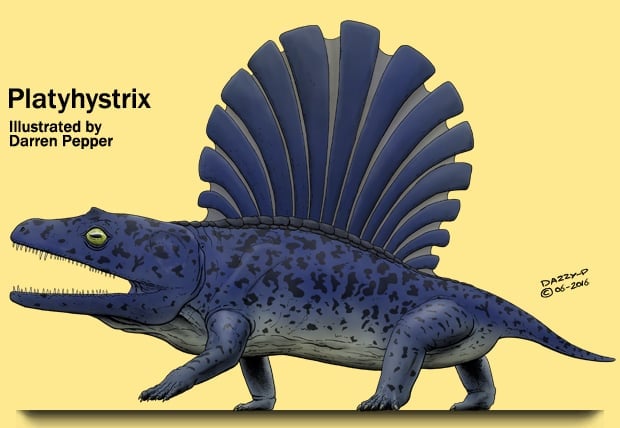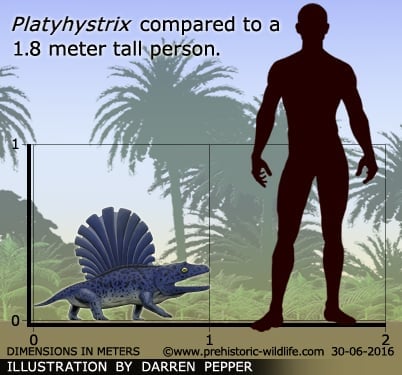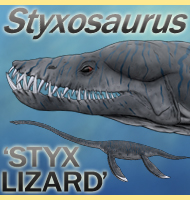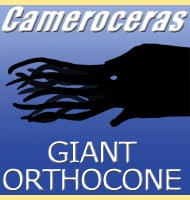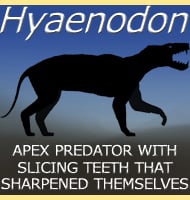In Depth
Platyhystrix stands out from the other amphibians of its group by possessing a sail on its back similar to the pelycosaurs Dimetrodon and Edaphosaurus. It is uncertain why Platyhystrix developed this sail, but the genus may have been adapting to a similar reason as the aforementioned pelycosaurs, indeed, their fossils and those of Platyhystrix have been discovered in Permian aged rocks from the same area of the United States.
Maybe the sail formed a thermoregulatory function allowing Platyhystrix to control body temperature, cooling off during the midday heat, or warming up early to hunt more sluggish cold blooded animals. Perhaps the sail served a display function, perhaps even allowing it to ‘blend in’ amongst the predatory sail-backed pelycosaurs so that they did not mistake Platyhystrix for prey. We don’t know for certain at this stage, but it’s equally possible that the sail may have served more than one purpose.
Platyhystrix as an animal was a small squat quadrupedal predator that would have hunted small animals such as reptiles, synapsids and other amphibians. This is confirmed by the teeth, which although numerous, are small, better for gripping small animals.
Further Reading
– Skull of the Lower Permian Dissorophid amphibian Platyhystrix rugosus. – Annals of the Carnegie Museum, v. 50, article 17. – David S. Berman, Robert Reisz & Michael A. Fracasso – 1981.
